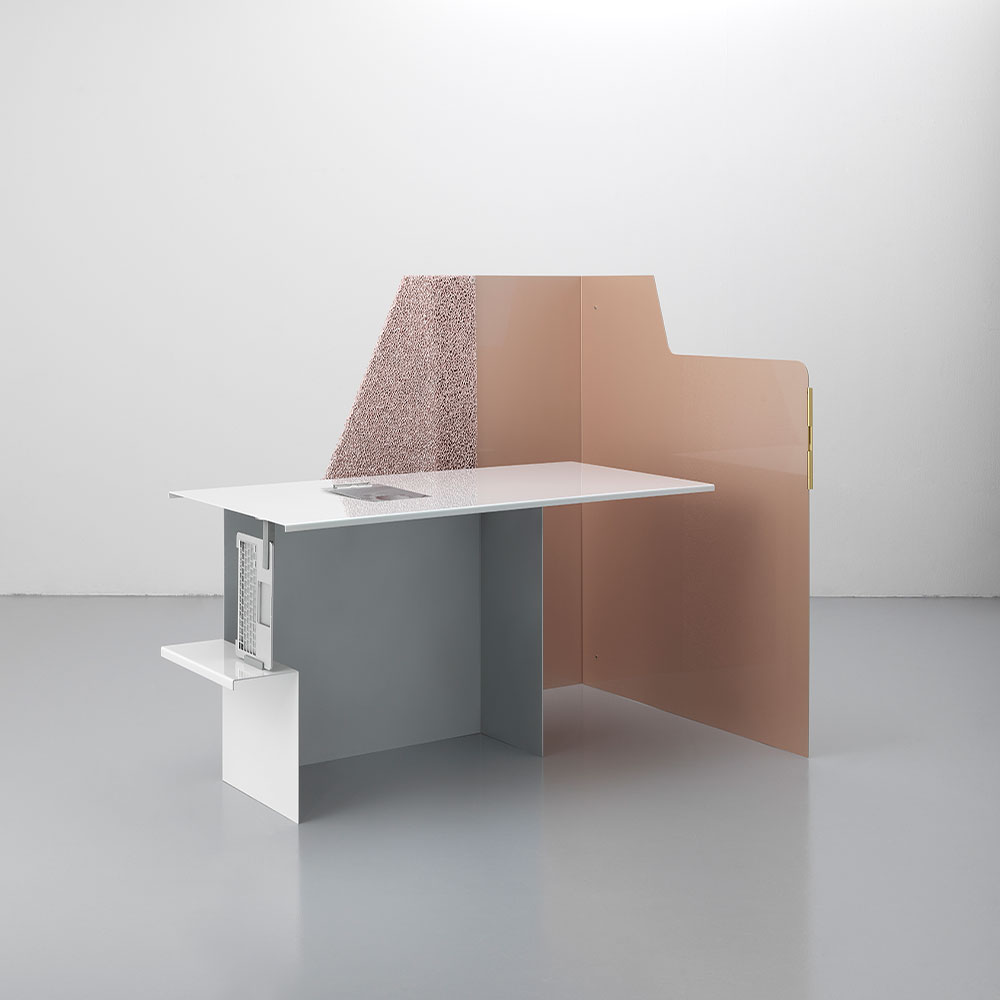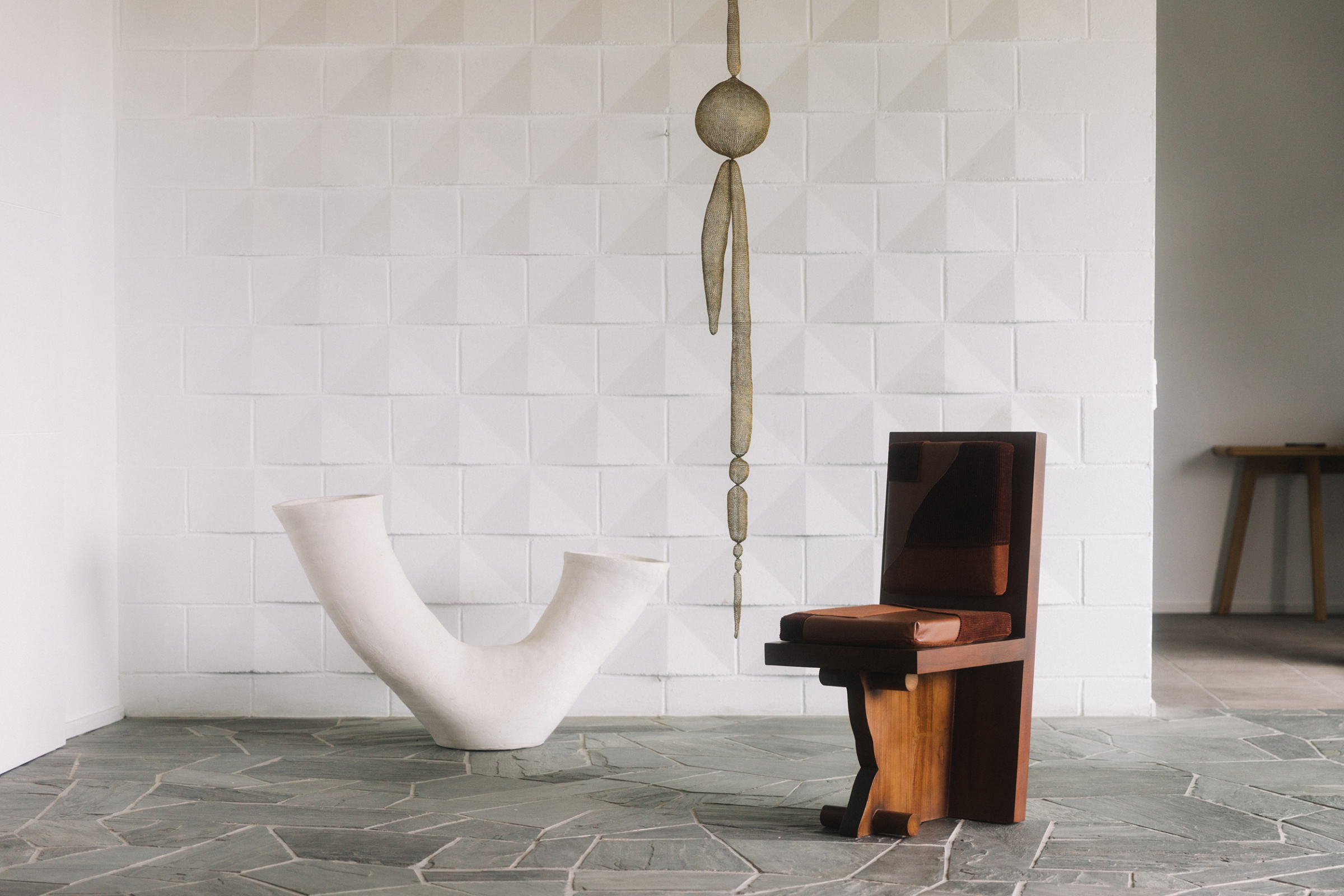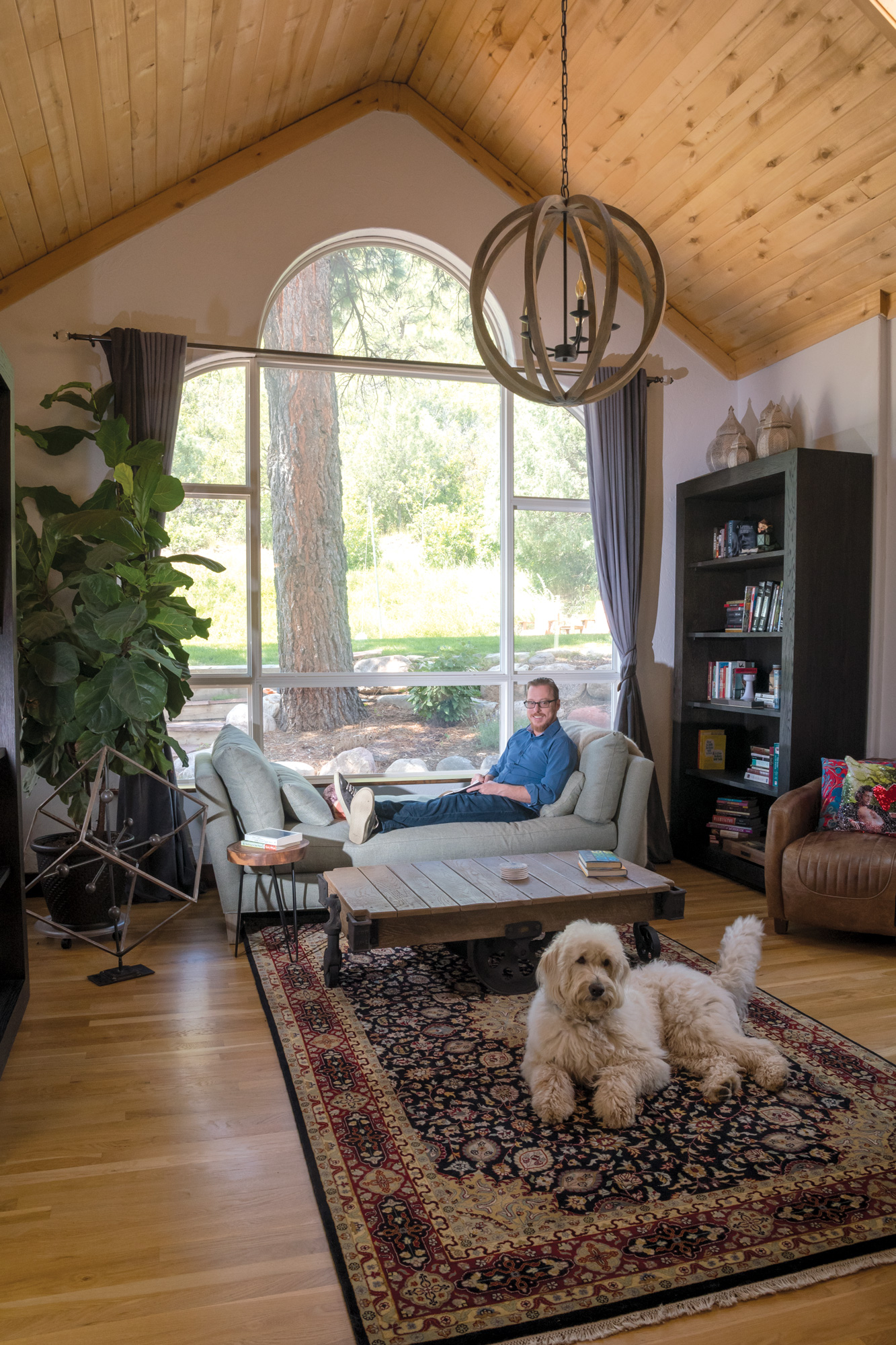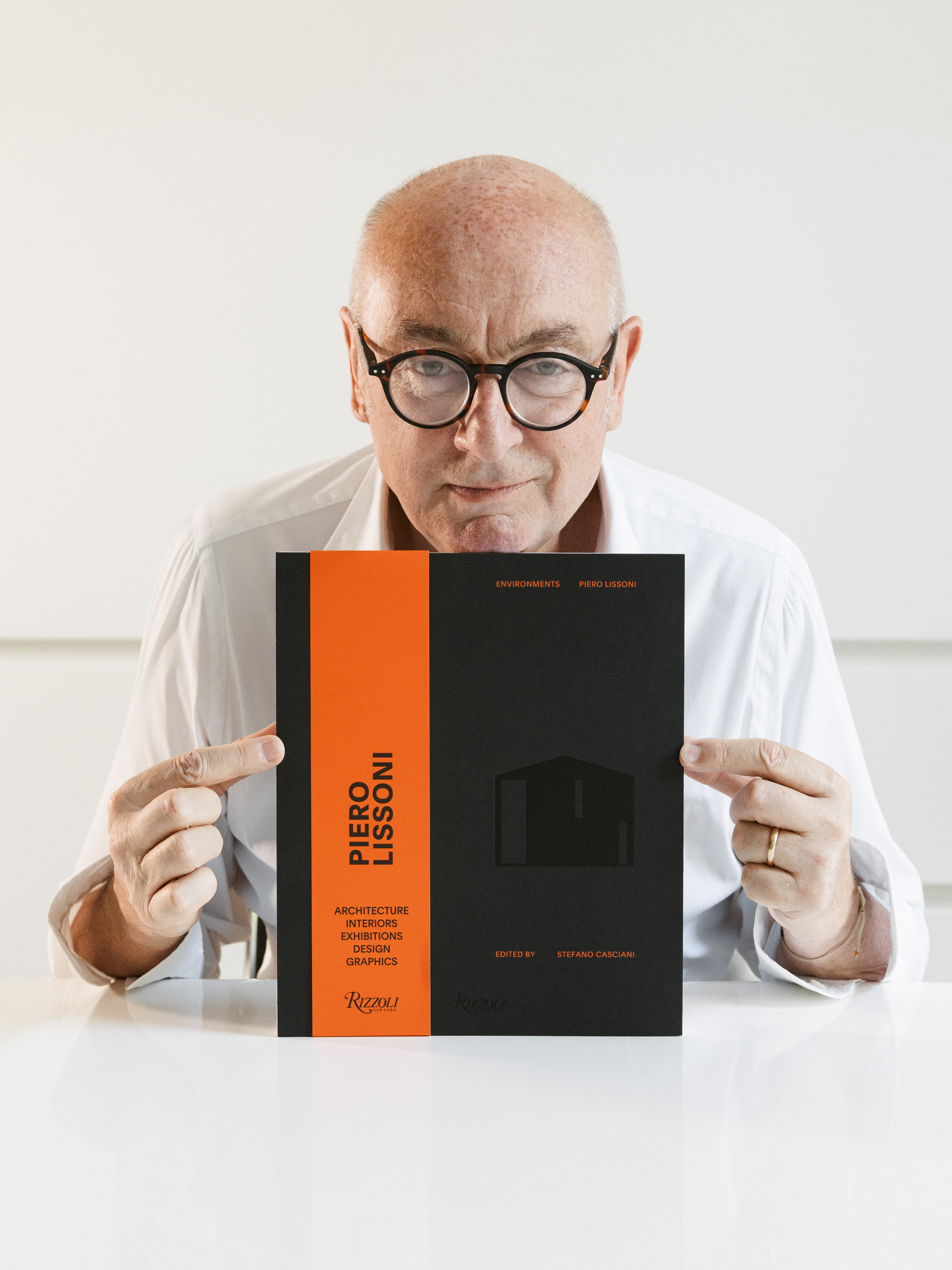Andrea Trimarchi and Simone Farresin, the Italian designers behind Amsterdam-based studio Formafantasma, are tackling social issues through innovative product design and material experimentation. While taking aim at wasteful design and consumption habits, the duo places themselves at the intersection between craft, industry, objects, and user experience—forged from an interest in research-based practices within the wider design industry.
The pair has collaborated with numerous brands, such as Fendi, Max Mara, Hermes, Droog, Established & Sons. And more recently, their two-year project Ore Streams—commissioned by the National Gallery of Victoria in Melbourne—saw physical objects, video, and animation bound together, opening up a dialogue on the topic of e-waste and the dangerous lifecycles of technology. Take the iPhone, for instance. With each eagerly anticipated new update, we contribute more and more to the ever-growing accumulation of electronic waste. Old products are ending up in landfills around the globe and, although countries widely vary in recycling capacities, none are able to fully deal with the increasing levels of e-waste buildup. So steady are our use patterns that in just six decades more metal will be aboveground rather than under, Formafantasma notes.
We spoke to Trimarchi and Farresin about their reasons for starting the Ore Streams project, and how they approach more research-based projects within their business model.
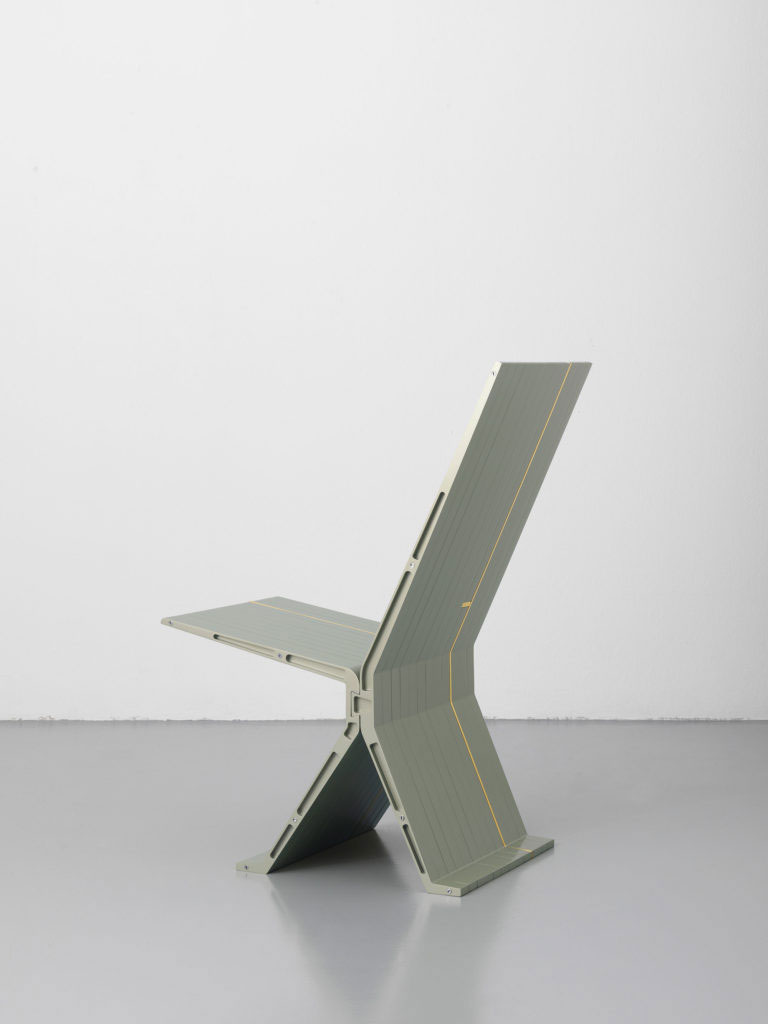
The Chair, featured in Formafantasma’s Ore Streams project, is made in part with metalized car paint and a variety of mobile-phone components. COURTESY OF FORMAFANTASMA.
What is the Formafantasma design ethos? Are there any particular viewpoints or methods of practice that you adhere to?
We believe that the role of a designer is to respond to the social and cultural necessities of a society. A designer should be critical and have the ability to open up possibilities and new ways of utilizing design as a discipline.
Recently, through our work with Ore Streams, we have investigated the recycling industry of electronics. The aim was to understand if these objects could be more efficiently designed for the recuperation of components or materials both in developed and developing countries. In this sense, our work is evolving and taking more responsibility. For Ore Streams, we also designed a series of objects that are more speculative–but that isn’t really the most important part of the work. The research is much more relevant.
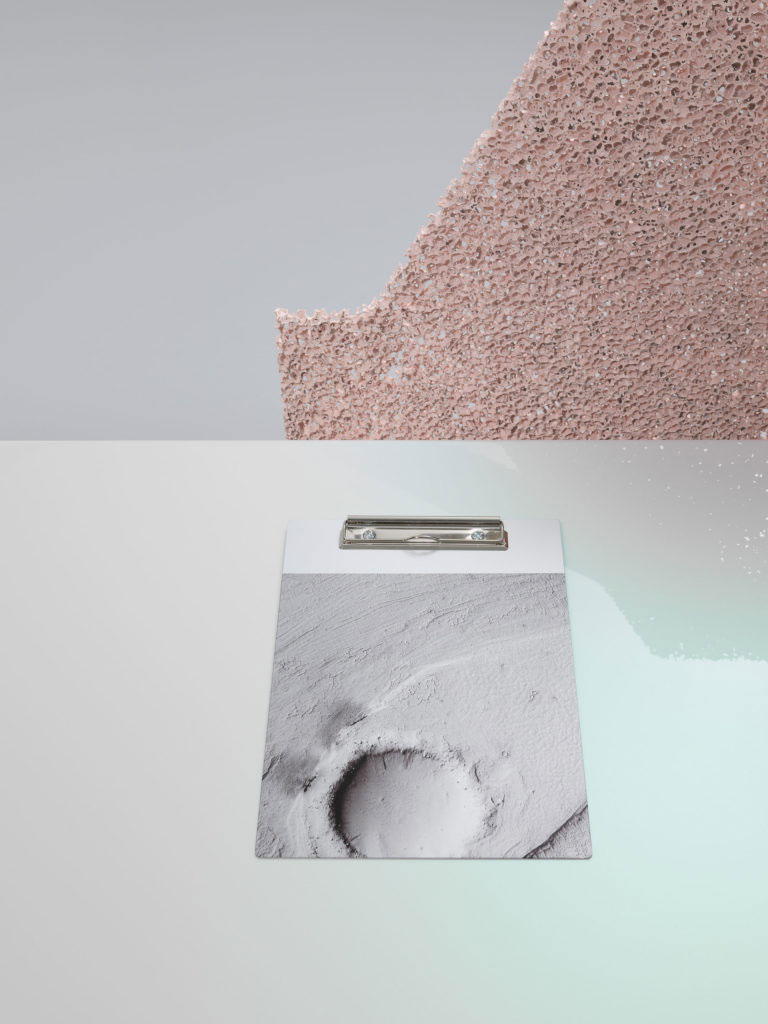
Cubicle 2, from Ore Streams, includes a table that hides an old microwave aerating grid and piles of mobile phone castings underneath its surface. COURTESY OF FORMAFANTASMA.
Run us through the concept for Ore Streams, your two-year research project on e-waste. Why did you start the project, and why now? Is the e-waste issue something that needs more attention?
The project was developed for the new NGV Triennial initiated by the National Gallery of Victoria in Melbourne. Initially, we wanted to focus on the mining of minerals because Australia is still one of the few first-world countries that has its economy still largely based on mining. We wanted to investigate the relationship between the sourcing of materials and their transformation into products.
The earth’s surface has been mined for millennia in search of resources–such as metals and minerals—to fulfill our production demands. In fact, forging metal changed the course of history: bronze empowered humans to weaponize and gold facilitated local and then global trade. Even at this very moment, new cavities are being hollowed out, while existing excavated sites are abandoned or re-filled with new earth—a superficial recompense. Our human greed for metals has grown to such an extent that by 2080, the biggest metal reserves will not be underground. Instead, they will be above the surface, as ingots stored in private buildings or otherwise circulated within products, such as building materials, appliances, furniture, and an ever-growing market of consumer electronic products.
“Efforts to recycle this complex hardware remain new, uncharted, and contentious.”
We decided to focus on the recycling of metals, because in the near future the majority of materials will come from recycled sources. Obviously, this is great–but on the surface of our planet, rivers of ore in the form of these discarded materials stream freely as if in a continuous, borderless continent. Efforts to recycle this complex hardware remain new, uncharted, and contentious. New logistic structures, technologies, and cross-country alliances are being forged to allow for the renewal of metals at the lowest expense. As this shift ensues, the mining industry will be permanently altered. We will enter a new phase, where above-ground scavenging will out-perform and out-value digging below the surface for raw material.
We decided to specifically focus on e-waste because it is at the moment the fastest growing stream of waste globally. Due to the complexity of recycling digital tools, a lot of these products are illegally shipped in developing countries where recycling technologies and regulations are often not in place. This is obviously a problem both for the environment and the laborer.

The Trash Bin, featured in Formafantasma’s Ore Streams project, sports gold coating that was gilded from discarded tech devices. COURTESY OF FORMAFANTASMA.
Do you think the design industry is doing enough to tackle waste problems?
No, absolutely not. When we visited all the different recyclers, they mentioned how there is a lack of communication between them—the designer, engineer, and producer. Producers are not aware of the implication of their design choices. For instance, when a phone must be recycled it is fundamental to remove the battery because if it’s shredded, it explodes. This must be done by hand and obviously if a phone is designed as a shell where everything is glued together, then even the simple action of removing a battery is more complex.
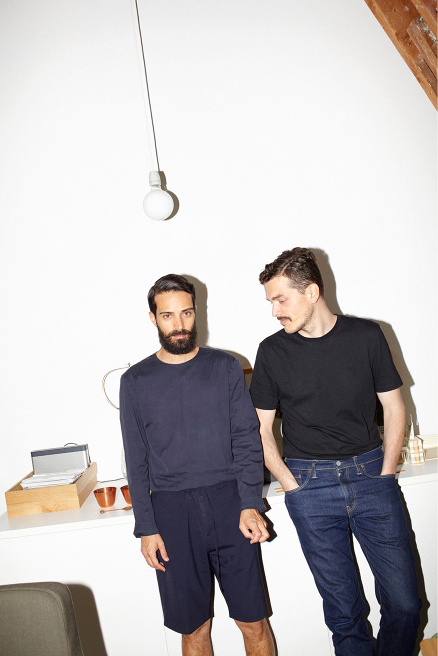
Andrea Trimarchi and Simone Farresin of Formafantasma. COURTESY OF FORMAFANTASMA.
How do you balance research-based projects like Ore Streams with your design business model? And what have you implemented to make sure that your designs go hand-in-hand with these commitments to recycling?
Over the years we have developed a more independent practice and a more commercial one. Nevertheless, even when we collaborate with larger brands we are preoccupied to make relevant works. For instance, when we designed the WireRing lamp for Flos, we had the idea to make an object that could be as simple and efficient as possible, and reduced to the minimum so that it could be flat-packed with the use of very few materials. The WireRing is designed to be a timeless object so that it could last as long as possible and not be discarded because of the changes of fashion. In that sense we tried to make it as sustainable as possible.
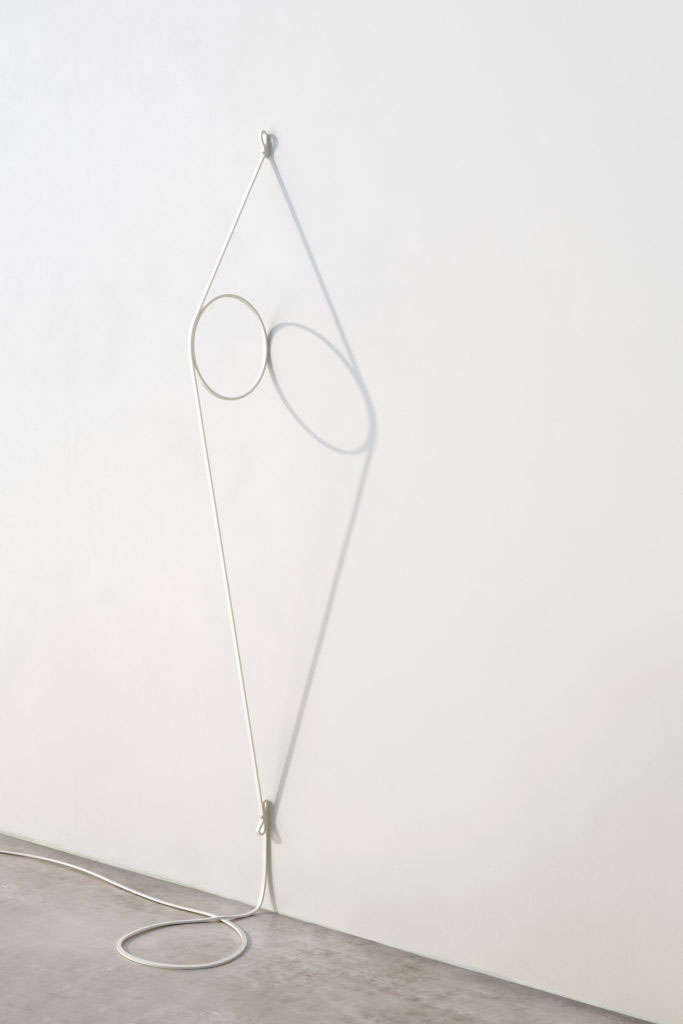
Formafantasma’s WireRing lamp for Flos. COURTESY OF FORMAFANTASMA.
Read more furniture, lighting, and product design stories on Sixtysix.
